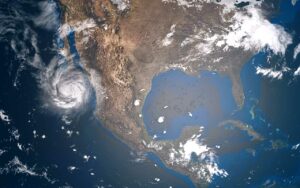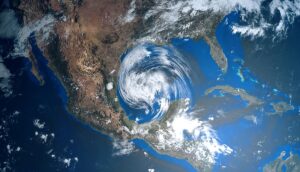For over two weeks, a steady flow of lava has been pouring out of the Kilauea volcano, which has been erupting in starts and stops since September, but recently the flow has been steadier – is a big eruption coming?
Kilauea volcano becoming more active
An eruption broke out on December 20, 2020, around 9:30 PM local time, at the summit caldera within Halemaʻumaʻu at Kilauea. It is the most active of the five volcanoes that form the Big Island of Hawaii.
On May 23, 2021, activity ceased, leaving a lake of lava 751 feet deep.
Then a new eruption kicked off at 3:20 PM local time on September 29, 2021. The Kilauea Volcano continued to erupt in starts and stops from that point forward.
Regular eruptions going 24/7
On May 2, 2022, the Kilauea Volcano began erupting in a steady, regular pattern of 24 hours a day eruptions within the Halemaumau Crater for more than a month and a half, the Honolulu Star Advertiser reported.
The Honolulu Star Advertiser posted a video from the United States Geological Survey (USGS) shows the continuing lava flow from the active volcano on Hawaii Island.
Is a major eruption of the Kilauea Volcano coming?
In 2018, National Volcanic Threat Assessment by the USGS ranked the Kilauea volcano first among those in the United States that is most likely to threaten lives and infrastructure, assigning an overall threat score of 263. This was primarily due to a water lake in Halemaʻumaʻu following the 2018 summit collapse, which indicated the next summit eruption could be explosive if magma rose rapidly to the surface.
However, the Kilauea eruption of December 2020 was non-explosive in nature. Three vents fed magma into the lake and boiled off the water.
As of May 4, 2022, the pulsing nature of the eruption is now filling the volcano’s crater with a steady flow of lava again, which has been nonstop for more than two weeks and has scientists concerned, US News reports.
Scientists with the USGS say the current activity shows no signs of slowing and note that the volcano is ultimately unpredictable, as some historical eruptions have lasted for decades.
“It [the eruption] could go on for quite some time,” said Ken Hon, a scientist in charge of the Hawaiian Volcano Observatory. “For now it is reestablishing its conduits in the summit area.”
The largest eruption recorded at the Kilauea Volcano occurred in or around November 1790 and is classified as a VEI-4, the highest number, on the Volcanic Explosive Index scale, which was only established in 1982. The 1790 Kilauea volcano eruption is described as the deadliest volcanic eruption in what is now the territory of the United States. Over 400 people were killed in the event.









